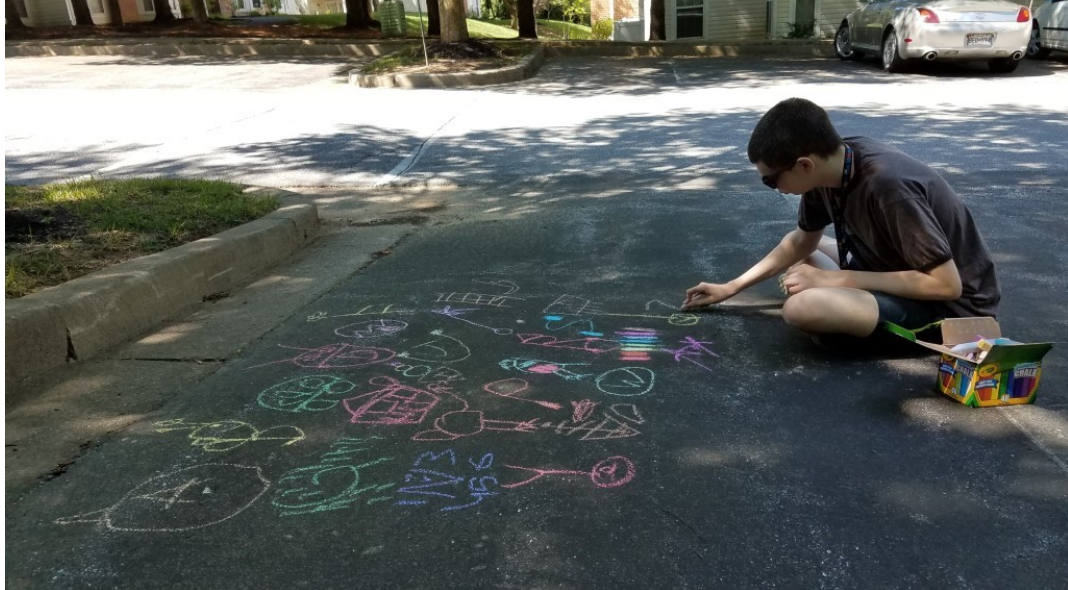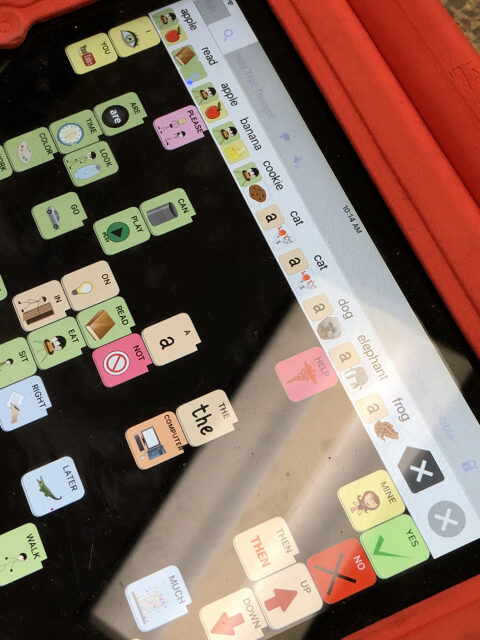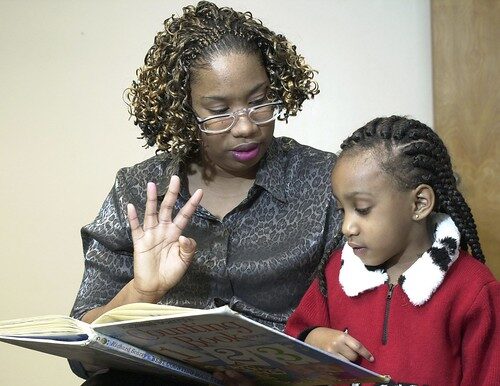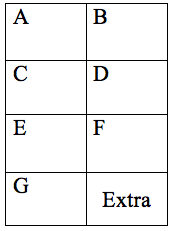Sunday Stillwell For the past three years, I have worked in a local elementary school as a one-to-one support aide to a handful of K-2 students with various intellectual disabilities, in a self-contained functional academic life-skills (FALS) classroom. My job is to assist the student I am working with in all aspects of their day. I sing songs during circle time, help them learn to request items with their communication devices, teach ABCs and 123s, and during recess I play tag because it made everyone giggle and little bodies have a lot of energy to burn in the last two hours of school. But, hands-down my favorite days are the ones when we draw pictures, sculpt creatures out of clay, or create masterpieces in art class using bits of rolled up tissue paper, glue, and a vivid imagination. My favorite days. Then, in March 2020, COVID-19 hit, and those in…
Tag: teaching
Think of your goal less about “doing it right” and more about “getting comfortable with AAC.” I’ve seen fear of being wrong all too often lead to no modeling. And I promise some modeling, modeling with mistakes, modeling slowly, all of it is better than no modeling.
We can be the teachers that our students need. We can celebrate neurodiversity while we hold ourselves to higher standards. We can provide robust education, equal access to the curriculum, and a life of autonomy and dreams. It starts with this…
I love that the expectation is that he has an opinion, wants to learn, and we just haven’t figured out all the best ways to help him communicate. It is comforting to know that they meet him where he is, but demand much of him.
How the right accommodations helped one autistic student instantly go “from being a misunderstood, odd child with behavior problems to being a supported autistic child.”
Stephen M. Shore, Ed.D. www.autismasperger.net Preparation “Can you help me draw a straight line down the middle of the page?” I ask my student upon our initial meeting. Done! “How about three more lines, going sideways?” Done! Soon we have eight empty squares on what was a blank notebook-sized piece of paper. “A!” responds my student when I ask for the first letter of the alphabet. I then ask him to write that letter in the first box before moving on to B through G. The 8th box is filled with the word “extra.” “Excellent! Gee, could you finish writing out a line of ‘As’ on this specially prepared yellow stickie™?” Done! “Now let’s write up some ‘B’s…” And we continue until we reach the letter G. Now with a “bank” of letters I’ll have the child use a scissors to cut the bottom part of the stickie™ off before…
Daniel Dage http://specialed.wordpress.com Note from the author: This article is part of a larger series about Individual Education Plans (IEPs) and the IEP process in which I go over each part of the IEP in-depth and describe the process from both a teacher perspective and a parent perspective. By far, this article seems to be the most read and searched for of the entire series. However, in actual practice I have not attended many IEPs where the goals and objectives were actually the subject of enough scrutiny by the attendees. Most of the time, the biggest issue of contention is during the discussion of placement. What most parents (and an embarrassing number of teachers) don’t realize is that goals and objectives are what are going to drive the students’ placement and services during the coming school year. While a Behavioral Intervention Plan (BIP) is the most abused part of the…





